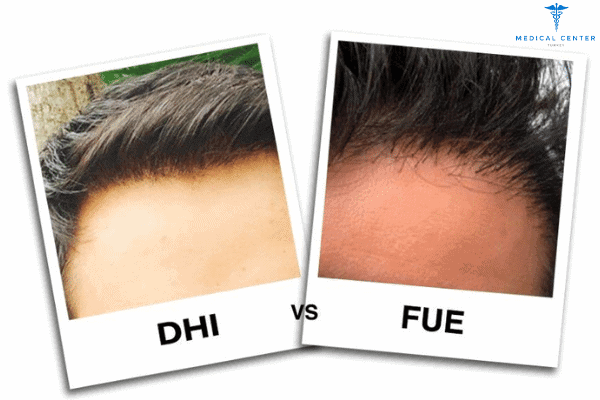When it comes to restoring lost hair, hair transplant surgery is a popular and effective solution. Two of the most advanced and widely used techniques are Follicular Unit Extraction (FUE) and Direct Hair Implantation (DHI). While both methods promise excellent results, choosing the right one for you depends on a variety of factors, including the extent of your hair loss, your budget, and your desired outcome.
If you’re considering a hair transplant in Turkey, a country renowned for its high-quality and affordable procedures, understanding the differences between FUE and DHI is crucial. In this blog post, we’ll compare both techniques, highlight their pros and cons, and help you decide which method is best suited to your needs.
What is FUE (Follicular Unit Extraction)?
FUE is a minimally invasive hair transplant technique that involves extracting individual hair follicles from a donor area, typically the back or sides of the head, and transplanting them into thinning or balding areas. This process is done using a small punch tool that leaves tiny, barely noticeable scars.
Advantages of FUE:
- Minimally invasive: The procedure involves tiny incisions, which leads to less scarring and quicker healing.
- Natural-looking results: FUE allows for precise placement of hair follicles, giving a natural hairline and appearance.
- No stitches: The lack of stitches reduces discomfort and the risk of infection.
- Suitable for large areas: FUE is ideal for covering large areas of hair loss.
Disadvantages of FUE:
- Longer procedure time: Since individual follicles are extracted, FUE can take longer compared to other methods.
- Multiple sessions may be required: For patients with extensive hair loss, FUE may require more than one session to achieve the desired result.
What is DHI (Direct Hair Implantation)?
DHI, like FUE, is a hair transplant technique that extracts individual follicles from the donor area. However, the key difference lies in how the follicles are implanted. With DHI, hair follicles are directly implanted into the scalp using a specialized pen-like device, known as the Choi Implanter. This allows for a more controlled and precise implantation process.
Advantages of DHI:
- More precise implantation: DHI allows for greater control over the angle, direction, and depth of each hair follicle, leading to a more natural-looking result.
- Faster recovery: Since the scalp is not punctured as much, the recovery time is generally quicker.
- No need for a traditional incision: DHI doesn’t require the creation of incisions, reducing trauma to the scalp and leading to less swelling and bleeding.
Disadvantages of DHI:
- More expensive: DHI tends to be pricier than FUE due to the specialized tools and technique used.
- Not suitable for large-scale hair loss: DHI is typically used for patients with smaller areas of thinning hair, as the process can be more time-consuming when covering large bald patches.
FUE vs. DHI: Which Method Is Best for You?
When choosing between FUE and DHI, there are a few factors to consider:
- Extent of Hair Loss: If you’re dealing with large areas of hair loss, FUE may be the more practical choice. It’s better suited for larger transplants and can handle more follicles in a single session.
- Desired Results: If you’re looking for maximum precision and a very natural hairline, DHI might be the way to go. The ability to control the angle and depth of each follicle leads to a highly customized result.
- Recovery Time: Both procedures are minimally invasive, but DHI generally offers a faster recovery time due to less scalp trauma. If you have a busy lifestyle, this could be an important factor.
- Budget Considerations: FUE is typically more affordable than DHI, making it a popular choice for patients looking for a cost-effective solution. However, if budget allows and you’re looking for the most precise results, DHI may be worth the extra investment.
Conclusion: Making Your Decision
Choosing between FUE and DHI ultimately depends on your unique needs and goals. Both techniques offer incredible results, but your decision should factor in the extent of your hair loss, your desired aesthetic outcome, recovery time, and budget. Consulting with a qualified hair transplant surgeon in Turkey is essential for understanding which method will best suit your needs.
If you’re ready to take the next step in your hair restoration journey, Turkey offers some of the most skilled surgeons and state-of-the-art facilities. Reach out today to schedule a consultation and learn more about how FUE or DHI can help restore your confidence.
Stay in touch to get more news & updates on Discover Tribune!




